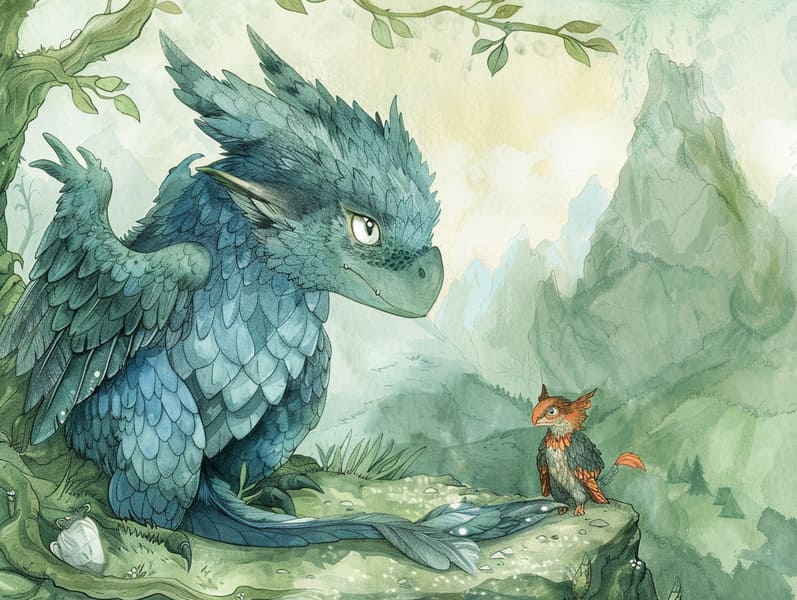
Popular fairy tales have ancient roots. These narratives have been narrated from one generation to the next millennia before they were ever published. They were born from a variety of societies, including Eastern traditions. They were initially narrated among older generations, often carrying themes and messages relevant to the societal norms and beliefs of the time.
The Brothers Grimm, Jacob and Wilhelm Grimm, were among the first to collect many of these beloved stories. Their compilation, "Grimm's Folk Tales," included tales like "Cinderella," "The Story of Hansel and Gretel," and "Snow White," which have since become cornerstones in the world of classic fairy tales. Similarly, Hans Christian Andersen's magical fairy tales, such as "The Story of the Little Mermaid," and "The Duckling that Could," have touched hearts worldwide, securing their place in the pantheon of timeless fairy tales.
Despite their ancient origins, traditional fairy tales remain as relevant as ever, especially as kids' bedtime tales. These charming stories are now available in numerous formats, including beautifully illustrated books, magical animations, and digital fairy tales.
Their enduring popularity can be traced to several magical reasons:
Ethical Lessons: Classic fairy tales often whisper important moral lessons. Stories like "The Shepherd Boy and the Wolf" teach the significance of honesty, while "The Race of the Tortoise and the Hare" emphasize the qualities of steadfastness and unpretentiousness. These stories offer young readers clear distinctions between good and bad, molding their moral compass in a gentle yet profound way.
Compassion and Knowledge: Ancient fairy tales frequently illustrate heroines facing challenges and problems, encouraging young listeners to feel with their struggles and celebrate their triumphs. For instance, "The Tale of Beauty and the Beast" demonstrates the necessity of seeing beyond looks to comprehend the inner being of a individual, advancing kindness and perception.
Cultural Perception: Many old fairy tales are steeped in the cultural contexts from which they blossomed. Immersing in these stories can provide delightful insights into different cultures, encouraging a sense of cultural insight and discernment.
Creativity and Imagination: The fantasy-filled elements in fairy tales—magic wands—ignite children’s creative minds. These tales bring readers to fantastical realms, invigorating fantasy ideas and a sense of fascination that continues a lifetime.
Timeless fairy tales are not only alluring but also pedagogical. They act as spellbinding tools in developing various mind and heart abilities in children. When timeless fairy tales are spoken out loud, they nurture language acquisition by showing new linguistic elements and detailed sentence structures. This practice also advances listening skills and concentration, as young readers follow the story, eager to see what happens next.
Furthermore, reflecting on the themes and characters of classic fairy tales can advance cognitive skills and critical thinking. Kids are shown to discern patterns, forecast, and know cause and effect. These discussions also ease young readers speak out their thoughts and feelings, advancing their emotional intelligence.
In today’s information age, the availability of online fairy tales has made these fairy tales more reachable than ever. Online platforms and programs offer vast collections of Grimm's fairy tales that can be browsed or listened to anytime, anywhere. Fairy tales recited are particularly favored, supplying an immersive method for children to enjoy these whimsical stories. Audio stories and narrated videos bring characters and settings to website life, often supported by fantastical soundtracks and tunes that raise the storytelling journey.
The enduring charm of ancient fairy tales lies in their ability to transform to today's world while staying true to their essential themes. Contemporary versions of these fairy tales often incorporate more multicultural protagonists and modern settings, making them meaningful to today’s audience. However, the core values of bravery, empathy, and truth remain unchanged, continuing to strike a chord with young listeners of all ages.
Timeless fairy tales also offer a sense of comfort and familiarity. They yield a orderly narrative with a clear beginning, middle, and end, often closing with the solving of conflicts and the triumph of virtue over wickedness. This regularity can be comforting for young ones, extending a sense of constancy in an variable world.
Ancient fairy tales continue to fascinate and edify new generations, maintaining their loveliness and value in modern society. As bedtime stories for kids, they bestow a perfect blend of charm and enlightenment, nurturing moral values, empathy, and creativity. The presence of online fairy tales and the widespread nature of fairy tales read aloud affirm that these timeless tales remain available to new generations.
By upholding and disseminating these stories, we continue to pay tribute to the rich tapestry of fables and cultural heritage. Whether you are exploring a vividly illustrated book, exploring a internet collection, or listening on an audiobook, the splendor of traditional fairy tales is always within reach. These tales teach us of the enduring strength of storytelling and its ability to draw us together across centuries and lands.
Even if you are seeing a vibrantly illustrated book, delving into a internet collection, or listening via an read-aloud book, the spell of Grimm's fairy tales is always within reach.
These fairy tales reveal of the perpetual ability of narratives and its ability to bring us together across epochs and places, weaving a spell that charms and informs alike.